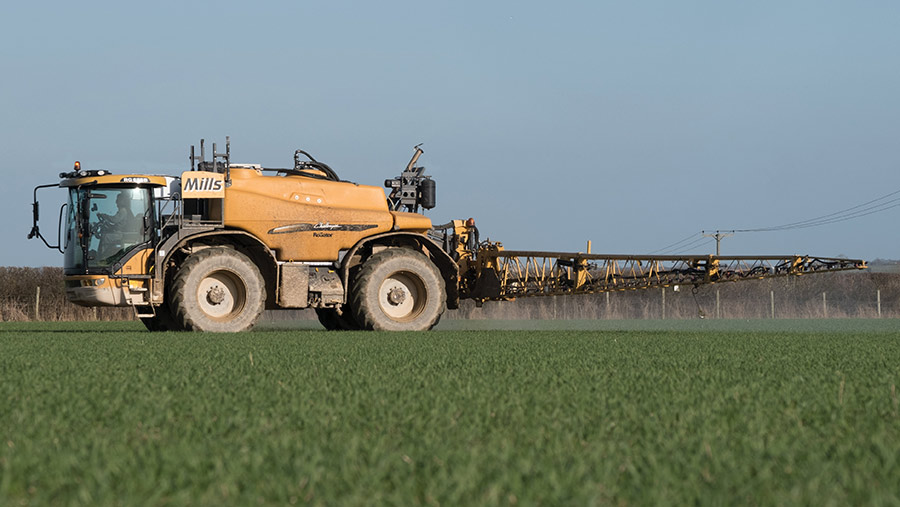Application conditions vital for herbicide success in February
 © Tim Scrivener
© Tim Scrivener Farmers who were unable to apply herbicides as planned last autumn are being advised to check crops for their weed status and apply a post-emergence herbicide as soon as conditions allow in February.
The wet winter weather saw wheat herbicide programmes go awry for some farmers, with delays to pre-emergence and peri-emergence applications.
See also: Can maincrop potatoes be grown in a regenerative system?
As a result, there is a risk of high weed carry-over into spring, requiring further treatment.
Bayer is advising growers to check the weed status this month and be ready to use a post-emergence as soon as conditions allow in February.
“Our newest product, Atlantis Star (mesosulfuron + iodosulfuron + thiencarbazone) is approved at its full rate from 1 February,” says campaign manager Tom Chillcott.
“It has three grassweed actives so if you are aiming to control difficult blackgrass, ryegrass or brome we recommend applying as soon as possible.”
Evidence from last spring suggests good results are possible from February applications, provided it is warm enough for active growth, which can be from as little as 6-7C.
Sunshine on the day of application also promotes better efficacy by promoting active growth, reducing drying time and most likely increasing the speed of uptake.
Tom points out that by targeting small weeds you are effectively increasing the loading of active ingredient by plant mass, making it easier to reach a lethal dose.
“In the past few seasons, we have seen how important conditions are to mesosulfuron-based chemistry,” he says.
“With many populations having some degree of metabolic resistance, applying early in suitable weather, so the chemistry can get inside the plant, is vital.”
Danish success with application timing tool
Farmers across the North Sea in Denmark face similar problems with timing applications of Cossack – a similar product to Atlantis Star.
Denmark has a long and variable spring. Warmer weather can be followed by colder periods, so the best time to apply Cossack can fall anywhere between late February and early April.
Søren Lykkegaard Hansen of Bayer was part of the team that launched a tool that monitors weather and advises farmers of the best time to spray.
The model analyses average and minimum temperatures two days before application and three days after. Suitable conditions are needed on all these days to ensure active weed growth.
It presents the results using a traffic light system by postcode, making it easy for farmers to check.
“In general, I think farmers and agronomists thought it needed to be a bit warmer to apply Cossack,” he says. “They possibly add 1-2C on to the label recommendations to be sure.
“This tool gives them reassurance that they can spray earlier, but also prevents them applying when it is unlikely to work.”
Bayer’s team in the UK is considering introducing a similar tool here and is doing trials and other work into the feasibility this spring.

